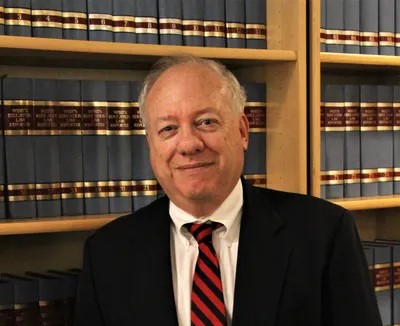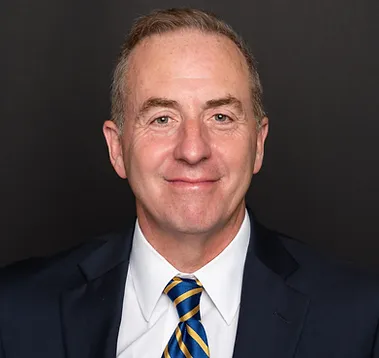Parents’ desire to control the way their child spends his inheritance is not new, and the resulting complications of this endeavor are evidenced throughout literature and history. A popular Bible story, that of Cain and his brother Abel, provides an apt example of the complicated relationships among siblings and between children and their parents. Cain and Abel’s situation evidences the difficulties in attempting to reward children based on their accomplishments. Cain is a farmer, and, although he works hard and produces fruit, it is Abel’s hunting abilities that are rewarded by society. When Abel receives a blessing as reward for his work, and Cain does not, Cain becomes enraged and kills Abel, bringing down God’s curse on his descendants. If society, at that time, had been structured so as to reward efforts in addition to results, or to reward different professions in different ways, this tragedy might never had occurred. So, most parents determine appropriate methods of transferring wealth to each of their heirs?
Additionally, the psychological issues surrounding mortality are extensive, and, when combined with the complexities of inter-familial relationships, the practice of planning transfers of wealth for future generations becomes increasingly complex. For example, King Lear’s method of coping with his approaching death -is to reward his daughters based on their appreciation of him. Because he feels that his youngest daughter does not appreciate him enough, he disinherits her. It is only after his entire kingdom has been divided and appointed to the remaining three daughters that King Lear realizes that the disinherited daughter is the only who is truly appreciative of and loyal to him. Perhaps, if King Lear had given more thought to the attitudes of his daughters, or if he had created revocable trusts instead of irrevocable gifts, this situation could have been averted or remedied.
Consider one of literature’s all time dysfunctional families. The mother, Gertrude, has married her deceased husband’s brother. Her husband killed his brother. Gertrude’s son, Hamlet, let’s call him Bubba for short, talks to ghosts. He has a split personality, evidenced by the fact that he asks himself the question, “To be or not to be?” His parents worry about him inheriting a kingdom.
While these stories present examples of issues that arise when parents are planning their estate, they do not provide advice on how these problems can be effectively prevented. The modem trend within estate planning to regulate an heir’s ability to utilize his inheritance is quickly growing. Creation and implementation of estate plans are more and more frequently being structured around the heir’s lifestyle and spending habits, and parents are beginning earlier and earlier to prepare their children for their future wealth.
Overview: A Growing Concern Among the Wealthy
Alongside their concern about terrorism’s effect on the economy, the country’s wealthiest members are becoming increasingly focused on controlling how their heirs will manage future wealth. A recent survey by U.S. Trust of the nation’s wealthiest 1% revealed that more than 50% of wealthy parents are concerned that their children will not manage their inheritance wisely. Improperly managing the inheritance could mean anything from spending the entire amount on one purchase or simply wasting it bit by bit. This generalized concern about irresponsible management is, of course, exacerbated when the heir happens to be a “problem child.” For purposes of this examination, the term “problem child” is meant to include all types of issues, from spendthrift children to those with physical disabilities or addictions or dangerous social habits.
Parents have historically created estate plans to protect their children financially from changes in the market or from personal emergencies, but parents are now creating estate plans to protect their children from themselves. It has even been suggested that these apprehensions have trumped, in terms of priority, efforts to save on taxes. As parents seek an array of strategies for managing their child’s financial shortcomings, the estate-planning field must continue to meet these needs with new and diverse approaches to the creation of trusts.
Below there will be a discussion of standard approaches, which have been used in providing for successive generations. In the case of the problem child, many of these will not be a solution. Nevertheless, a discussion of these traditional matters will follow:
Gifts under the Uniform Transfers to Minors Act or Uniform Gifts to Minors Act
Do not bother if the child has a problem. Who wants to deliver a large lump sum of money to them so they can go buy a Ferrari instead of the funds being used to further education.
IRC Section 2503(c) Trust for Minors
IRC Section 2503(c) allows you to make a present interest gift for the benefit of a minor to a trust with the following characteristics:
- The trustee must have raw discretion to distribute any property from the trust to or for the benefit of the minor prior to age twenty-one (21).
- The minor must have the right to receive property outright at age twenty-one (21).
- In the event of the minor’s death prior to age twenty-one (21), the property must either pass to his or her estate or be subject to a general power of appointment in the minor’s Will.
The trust may contain either continuation provisions allowing the extension of the term of the trust by the minor at age twenty-one (21) or require the minor to take an affirmative action to terminate the trust at age twenty-one (21). In the latter instance, if the minor does not act, the trust can specify a later termination.
While this is a popular type of trust for minors, to some extent it has been replaced by Section 529 Plans. Also, if the trust allows the beneficiary to make a decision as to the continuation beyond age twenty-one (21), there is no guarantee that the beneficiary will in fact do that.
Section 2503(b) Trusts for Minors
I.R.C. Section 2503(b) allows you to make a present interest gift for the benefit of a minor to a trust with the following characteristics:
- The trustee must distribute income currently to the beneficiary and may distribute principal in his or her discretion while the beneficiary is still a minor, but only to the income beneficiary.
- The trust is not required to terminate at the beneficiary attaining age twenty-one (21) or even require to pay principal to the beneficiary at all.
- The property in the trust must be income producing for income beneficiary’s interest to be ascertainable, and therefore, qualify for the gift tax annual exclusion. Also, the trustee’s discretion to allocate receipts and expenditures must be narrowly drafted to avoid the appearance that the trustee could skew income so the amount could be unascertainable.
The gift is eligible for the gift tax annual exclusion on the income interest amount, but not on the remainder amount. The gift is divided into two portions: an income portion and a principal (remainder) portion. The income portion will qualify for the annual exclusion while the balance is considered a future interest gift and will not qualify for the exclusion.
This type of trust can extend beyond age twenty-one (21), but the restrictions on distribution of principal make it less desirable if there is an actual need for principal distributions to the beneficiary.
The Family Incentive Trust
The trust is the most common vehicle for increasing parental control over an heir’s finances because it is the most appropriate method for creating behavioral incentives. Economists explain that timing is crucial here, as an incentive can only be effective if it is offered at exactly the right moment. The most applicable trust in creating safeguards for an heir is the family incentive trust. This is only one aspect of a family’s overall estate planning, but it has proven to be an effective method of enabling parents to direct their children’s future spending. This type of trust forces the beneficiaries to earn the privilege of their inheritance, and it allows the grantor to dictate the means of this earning. The FIT is a fairly recent creation, and it is particularly founded on the premise that no single beneficiary will be allowed to live off of trust income alone. This is a prime example of a trust that focuses less on tax issues and more on character building. Increasingly common usage of this technique reflects a growing awareness among the wealthiest of our population that monetary gain can be used for positive or negative ends.
The incentive trust is designed to address many of the perceived problems of inheriting wealth such as:
Loss of Motivation
As a general rule, people follow a simple law of physics: they take the parts of least resistance to achieve their goals. If you already have access to personal wealth, why get up a five o’clock in the morning to go to the office to haggle with supervisors, partners, or customers in furtherance of a business or other endeavor, the primary purpose of which is to make money?
Lack of self-Sufficiency
Related to a loss of motivation is a loss of personal and financial self-sufficiency. Loss of personal self-sufficiency comes from never having to take care of your own basic needs.
Overwhelming Complexity
To address the complexities of wealth management, most people who acquire wealth suddenly must put their faith and trust in many different people to manage their money. Some may even abuse the trust that has been placed in them.
People who acquire wealth suddenly (particularly inherited wealth) often develop a deep sense of guilt over the source of their wealth.
Loss of self-esteem
Lack of motivation and personal accomplishments, lack of personal and financial self-sufficiency, reliance upon others for one’s personal and financial needs, and a sense of guilt, are the perfect recipe for low self-esteem. A lack of self-esteem leads to depression, poor judgments, and general unhappiness.
A frequent external symptom of low self-esteem is arrogance. Essentially, arrogance is the adult equivalent of being a spoiled child.
Spendthrift lifestyle
Stories abound of those who acquire sudden wealth who just as suddenly spend or lose it all. It is psychologically easier to spend money that suddenly arrives on your doorstep than to spend money you have had to work hard to earn.
Addictive and self-destructive behavior
Temporary relief from a low self-image may come for some from the use of alcohol or addictive drugs. Addiction to such substances enhances the feeling of worthlessness, however, and the cycle continues, possibly into more overt acts of self-destruction.
The goal of incentive trust planning is to ensure, to the extent possible, that inherited wealth creates a positive rather than a negative legacy. In the often-quoted words of Warren Buffett: “The perfect inheritance is enough money so they feel they can do anything, but not so much that they could do nothing.”
Although each incentive trust plan is as individual as each granter and each beneficiary, the following themes carry through most incentive trusts:
Promotion of the Grantor’s Value System.
Inherent in every incentive trust is the promotion of the grantor’s personal value system. The most common value represented in incentive trusts is the grantor’s belief that beneficiaries should be employed or otherwise financially self-sufficient. A granter may also see value in a beneficiary’s decision to be a stay-at home parent. The granter may seek to encourage community or religious service, or even the development of personal talents. A value system can be even more granular in nature, focusing on participation in a particular religion, maintaining a long-term marriage, or an involvement in a specific family business.
Breaking the Connection between Wealth and Loss of Motivation
A specific goal represented in almost every incentive trust is to break the connection between inheriting wealth and a loss of self-motivation. The beneficiaries should not be entitled to rely upon the trust for their every want or need, and should be permitted to experience personal struggles and triumphs. To accomplish this, access to trust funds is usually tied to a demonstration of some type of personal accomplishment, such as educational achievements, income production, or contribution to the community.
Discouraging Unproductive Behavior
Granters frequently have a mental laundry list of unproductive behaviors that should be discouraged. Common targets are failing to work to maintain one’s desired standard of living, substance abuse, failed marriages or failing to provide for one’s children, spendthrift behavior, failing to pursue a college education or, conversely, remaining in school beyond that reasonably necessary to obtain an appropriate education.
Financial Training
Although not present in all plans, a goal of some incentive trusts is to provide financial mentorship designed to .enable the beneficiary to manage wealth responsibly, to feel I control of his or her financial destiny, and to promote sound fiscal management to the next generation.
Providing a Financial Safety Net
It is rarely the intent of the granter to leave even the most unproductive and irresponsible beneficiaries out on the street. Therefore, a theme in most incentive trusts is to insure that the basic health and maintenance needs of the trust beneficiaries are met.
Trust assets are also typically made available in the event of an emergency or catastrophic event that a beneficiary could not reasonably anticipate or plan for financially.
A common objection to the concept of incentive trusts is that they are a more sophisticated (but no less distasteful) form of the “dead hand ruling from the grave.” This is, in fact, a correct assessment: ultimately, a person who is no longer alive will determine whether a living person will have access to wealth set aside for his or her benefit. The same can be said, however, with respect to any trust that continues after the death of the grantor, even one that provides distributions for a beneficiary’s “reasonable health, education, maintenance, and support,” and principal distributions in one-third increments at ages 30, 35, and 40.
Certainly, leaving enormous sums of money to children, grandchildren or other beneficiaries who are unprepared for it is not good planning. Unfortunately, moving the age of outright distribution from 18 or 21 to age 30 or 40 does not necessarily prepare the beneficiary for the receipt of that wealth.
Without question, the best way for you to prepare your children for an inheritance is for you to personally train the beneficiary, in both word and deed, on matters of personal values, as well as the use and management of wealth. However, incentive trust planning is most often done for beneficiaries over whom the grantor may otherwise have little influence. An incentive trust may be created upon the death of a grantor with minor children in order to insure that at least some of the grantor’s values are conveyed to those children as they mature into adulthood. An incentive trust may provide benefits to the future generations of unborn beneficiaries whom the grantor may never meet. Even if the grantor’s adult children are the beneficiaries, the. children may have been raised by their other parent, or they may have been raised by the grantor, who now regrets mistakes made and hopes not to compound them by leaving a large and unrestricted inheritance to these children and their descendants.
Incentive trusts have at least two basic operative elements. The first element involves one or more financial incentives designed to encourage certain behavior in a beneficiary that the grantor views as “positive” or “productive.” The second element is designed to limit distributions to beneficiaries who engage in “negative” or “unproductive” behavior, or who have other problems that might be compounded by large trust distributions. Some incentive trusts have a further element that is designed to teach beneficiaries how to plan for or manage wealth. A fourth element of an incentive trust may be a “charitable pour over”; that is, the distribution to charity of excess annual income or the portion of the trust’s value in excess of a certain “wealth ”
Positive Behavior
While the possibilities are literally endless, the following are some of the more common incentive provisions:
Incentives for Attaining Educational Goals
Traditional trust planning often encourages education by providing support for educational pursuits. An incentive trust goes further by encouraging specific educational achievements. A beneficiary may be entitled to a reward for the successful completion of the first year of college. For example, the trustee might pay for a summer trip to a destination of the beneficiary’s choosing, buy the beneficiary an automobile, or make a fixed payment of some kind. Additional benefits might be provided upon graduation. A well-drafted educational incentive provision is more specific than simply rewarding a beneficiary for enrolling in a college or university or obtaining a degree. Certain grade point averages might be mandated, certain types of curricula could be encouraged or discouraged, or the benefits may be limited to enrolling in certain types of colleges or universities (or even the grantor’s alma matter).
In designing education incentive provisions, it is important to consider the following:
Avoiding Professional Studentism
Does the provision encourage “professional studentism,” that is, the decision by a beneficiary to stay in school as long as possible in order to avoid the need to be financially self-supporting?
Meeting the Bare Minimum to Keep the Money Flowing
Does merely enrolling in a college program without any requirement of performance encourage beneficiaries to do the bare minimum necessary to keep the money flowing?
Comparative Rigors of Curriculum
Does the academic performance standard in the trust (e.g., maintaining a B+ or better grade point average) give due consideration for the comparative rigors of one curriculum over another or the quality and difficulty of the educational institution?
Alternative Educational Paths
Has adequate provision been made for those beneficiaries who simply are not college material (perhaps due to a mental or physical disability), but who pursue an education that is commensurate with their goals and abilities, or, alternatively, those beneficiaries who pursue a different type of training (such as vocational school) appropriate for their career goals?
Adult Continuing Education
An adult beneficiary may wish to go back to school to enhance an important skill or to develop an area of professional expertise. The trust might authorize the trustee to pay for an educational sabbatical to allow an adult beneficiary to take time off from his or her normal employment to pursue a worthwhile educational goal. Trusts that permit or encourage “educational sabbaticals” of this nature usually limit the number of sabbaticals that can be taken within a given time frame (such as once every 10 years), as well as the length of a sabbatical and establish a maximum amount of financial support that will be provided for this purpose.
Income Matching
A close runner up in the popularity contest in incentive trust drafting is the income matching provision. This provision requires or authorizes the trustee to make distributions to a beneficiary in an amount that matches the beneficiary’s earned income, in whole or part, often subject to a cap on total distributions.
As straightforward as the concept may sound, income-matching provisions require careful thought. A well-drafted provision must address numerous variables and practical problems, and the final product can and should differ based upon each grantor’s specific objectives. Just a few of the drafting issues are set forth below:
How is Earned Income Defined?
Not all beneficiaries will be employees who receive W-2 forms. Beneficiaries may be self-employed or members of a partnership, or they may assist a spouse in his or her business, but not take a substantial salary from the business in order to minimize self-employment taxes. A beneficiary who was gainfully employed may be temporarily disabled and receiving disability insurance payments as a substitute for wages. Be certain the definition of “earned income” adequately addresses these types of situations.
What about the Spouse ‘s Income?
Should the earned income include the income of the beneficiary’s spouse, particularly if the beneficiary chooses to stay home to care for children or dependent adults?
Does the Provision Reflect Your Values?
Does the earned income provision reward the beneficiary who is a successful stockbroker or a sports super star over the beneficiary who is an award-winning educator? What about the beneficiary who has an unusual windfall in a given year (such as a one-time bonus or commission, or the receipt or exercise of stock options)? Is matching this windfall what you had in mind?
Penalizing Disabled Beneficiaries
Although it is admirable to encourage financial self-sufficiency, due consideration should be given to the possibility that some beneficiaries may be unable to produce substantial income, or any· income for that matter, because of mental or physical disability, or perhaps because he or she must tend to a disabled spouse or other family member.
Staying at Home to Raise Children
On the flip side of the earned income provision is the provision that openly rewards beneficiaries who forego a career in order to stay at home to raise children. This is typically accomplished by making monthly or other payments to or for the benefit of a beneficiary who is raising children.
The tough call in such a child care provision is how to handle the beneficiary who has children and stays at home to raise them in order to be supported by the trust. On the one hand, the payments should be high enough to encourage a working mother or father to choose family over career, at least temporarily, if that is what you value. On the other hand, manipulative beneficiaries may perceive the trust as something of a private welfare program. To address this, the payments might be reflective in some way of the earnings opportunities foregone by the beneficiary.
Charitable Giving
An incentive trust may provide that a certain percentage of the trust income or corpus will be distributed to charity each year, and provide the beneficiary (or a committee of beneficiaries) the opportunity to designate the charitable recipients. Alternatively, the trust might match personal charitable contributions made by the beneficiary. The income tax and transfer tax aspects of each of these options should be carefully considered before drafting such a provision, however. When the dollar amounts are significant, it may be more efficient to create a separate charitable trust or a family charitable foundation for this purpose.
Contribution to Society
Some trusts reward, or at least provide financial assistance to, beneficiaries who choose to make a positive contribution to their communities, either by volunteering their services, or by choosing a career which is important to society or personally rewarding to the beneficiary, but which provides only modest compensation (such as teaching, social work, or working for a church or other nonprofit organization). The trust might authorize the trustee to supplement the income of such beneficiaries or to provide such beneficiaries occasional luxuries (such as a vacation or a new car), which they could not otherwise afford.
Religious Pursuits
Some incentive trusts reward beneficiaries who agree to provide their children a certain religious training or upbringing. A trust might, for example, fund a sabbatical for a religious mission, pay for religious training or ceremonies, or otherwise support a religious objective.
Provisions Focusing on Marriage
Marriage provisions are by nature touchy. The simplest and least controversial is a provision authorizing the trustee to pay for wedding or honeymoon expenses provided the beneficiary is of at least a certain age. An additional “wedding present” might be provided to a beneficiary who waits even longer to marry, for living separately from his or her fiance prior to marriage, or for marrying within certain parameters. Provisions that encourage a beneficiary to marry within a particular religion or ethnic group should be thought through carefully, however, as they may violate public policy.
Marriage related provisions may also be designated to encourage a married couple to stay together. These provisions often involve financial incentives for a beneficiary’s spouse. For example, the trust may provide direct financial benefits to a spouse who remains married to a beneficiary, including survivorship benefits, but cuts these benefits off when the marriage ceases.
Taking Care of Disabled Family Members
In some cases, a grantor’s greatest concern is who will take care of a physically or mentally disabled child, an elderly friend or relative, or other person who presently relies upon the grantor for such care. A trust may be drafted to provide substantial benefits to a beneficiary who rises to the challenge. Care must be taken, however, to insure that the beneficiary is properly discharging his or her duty to the disabled person. Further, the trust provision should be drafted to protect the beneficiary who fails to work in order to take care of the disabled person. Upon the death of the disabled person (or if the disabled person’s conservator should determine it would be in the disabled person’s best interests to be institutionalized or placed in a facility designed for the disabled person’s special needs), the benefits to the former caretaker should continue for a period of time sufficient for the caretaker to re-enter the job market.
Avoiding Traffic Violations
Grantors may be concerned that a beneficiary’s imprudent driving habits will cause damage or injury to the beneficiary or others. They may attempt to tip the balance in favor of good driving habits by making payments to beneficiaries who have clean driving records at the end of any given year, or by providing a car to the beneficiary that can be taken away if the beneficiary has too many tickets, accidents, or even parking violations.
Requiring Estate Planning or a Prenuptial Agreement
Some grantors attempt to twist a beneficiary’s arm into doing personal estate or pre-marital planning by withholding benefits until proof of such planning is provided to the trustee. Of course, almost any estate or pre-· marital planning done by the beneficiary to obtain a distribution can be undone by the beneficiary after the distribution. Therefore, if the grantor’s goal is asset protection, the better approach is to keep a beneficiary’s inheritance in trust and only make consumable distributions. If, on the other hand, the grantor’s goal is to encourage good planning in whatever manner the beneficiary deems appropriate, then the grantor might authorize the trustee to pay for legal or other estate or financial planning services, both for the beneficiary and the beneficiary’s spouse or fiance.
Encouraging Relationships with Extended Family
In the mobile society in which we live, it is not unusual for families to be spread around the country, or even the world. A grantor may wish to encourage closer bonds between family members by insuring that there are funds available for family members to get together on an annual or other basis.
Coping with Divorce or Other Family Problems
Based upon a grantor’s own life experiences, or perhaps just an innate sense of reality, a grantor may specifically authorize the trustees to make distributions to, or for the benefit of, a beneficiary to defray the multitude of expenses that can surround a failing or failed marriage, including, for example:
- Distributions to assist a beneficiary to initiate or defend divorce or custody proceedings or to initiate a child support collection action;
- Distributions to assist a beneficiary to obtain temporary housing when marital problems are an issue or where the beneficiary is concerned for his or her safety due to domestic abuse; or
- Distributions to allow the beneficiary or the beneficiary’s dependents to receive qualified professional counseling concerning the marriage and the beneficiary’s family.
Negative Behavior
The flip side of encouraging positive behavior is discouraging negative behavior:
Substance Abuse or Other Addictive Behavior
A trust may be drafted to cut off benefits to a beneficiary who has substance abuse problems, other than those benefits necessary to secure treatment and to insure that basic living needs are met. Upon learning that a beneficiary has substance abuse problems, the trustee is typically instructed to make payments directly to service providers rather than to make payments to the beneficiary, who may use the distribution to purchase drugs or alcohol. (Appendix 1 has a sample form of clauses directed toward this behavior).
Lack of Financial Self—Sufficiency
If a beneficiary has never made a serious attempt to support himself or herself, he or she may be entitled to no more than the most basic of benefits designed to keep the beneficiary fed, clothed, sheltered, and with appropriate medical care.
Lack of Fiscal Responsibilities
Trust distributions may be limited as to a beneficiary who spends everything he or she receives or who has substantial debts. The provision, however, should not punish a beneficiary who is suffering financial problems not from imprudence but rather misfortune. Also, a provision discouraging wanton spending habits may collide with other trust provisions. For example, simply because a beneficiary is a high-income earner does not mean the beneficiary has any fiscal restraint.
Creditor or Ex-Spouse Problems
Few grantors want trust funds to be paid out to a beneficiary if the ultimate recipient of those funds will be a creditor or an ex-spouse. The trust agreement may therefore provide that, notwithstanding any other provision authorizing distributions, no distributions should be made if the ultimate beneficiary will be an ex-spouse or a creditor rather than the intended beneficiary.
There are multiple approaches to structuring an FIT. In its most basic form, the trust may be structured as a purely behavioral incentive, such as “pay $10,000 to each of my descendants who graduate from college with a 3.5 or better grade point average.” Of course, the requirement could also be a prohibition, such as “pay $50,000 to each of my children who reach the age of 50 without getting divorced.” Alternatively, an FIT may expand to combine these types of behavioral incentives with measures that allow for broader monetary distribution. These measures may include the creation of a match earned income, a private bank for family members, or a family foundation. In one of these scenarios, trust income could provide a safety net for heirs, as well as the behavioral incentive and a match earned income. Or, trust principal could be structured so as to provide an emergency reserve for family members, create behavioral incentives, and serve as a private family venture capital source.
Proponents argue that it is naive to assume that a trust with no restrictions doesn’t also have an impact on the beneficiary. It’s well known that inheriting large amounts of money can create deep emotional problems for the beneficiary. Why not set up the trust to encourage positive behavior and positive inheritance experiences? Proponents also believe that there is nothing wrong with trying to instill values in your children, even as they are adults. A key, they say, is to discuss these restrictions with the beneficiaries before the trust creator dies. This not only helps minimize misunderstandings, but also helps them plan their own financial life.
Dynasty Trusts
A common estate planning technique is to create a trust that is designed to last for more than one generation—a “dynasty” trust. Its two primary benefits are that it minimizes the transfer taxes on the assets of the family as a whole and that it allows the donor to impose controls on the gifted assets for a long period of time.
Duration of Trust
Currently in Texas, as in most states, an individual cannot create a perpetual, non-charitable trust, but the dynasty trust can be continued for an extensive period of time (approximately 100 years or more). Some states, such as Texas, limit the maximum term of a dynasty trust to a period measured by the lives of individuals living at the time the dynasty trust is created or otherwise becomes irrevocable. Other states use a fixed period of time set by statute (e.g., 199 years). The state statute dealing with the durational limits of dynasty trusts is usually referred to as the “Rule Against Perpetuities.” A few states have recently repealed their Rules Against Perpetuities, and now, in theory, those states allow the creation of perpetual, non- charitable trusts by individuals. However, those states have imposed many conditions and legal requirements on the creation of such trusts in their jurisdictions, making the· actual creation of such trusts by non-residents less attractive. Nevertheless, if an individual wants to create a perpetual, non-charitable trust for his or her family, then the creation of the dynasty trust in or under the laws of one of those states should be considered.
Structure of a Dynasty Trust
To establish a dynasty trust, a donor creates a trust and designates a trustee to hold the trust assets. The trust is typically structured to last for the lifetimes of the donor’s children, and then continuing trusts hold the assets for the lifetimes of the donor’s grandchildren and more remote In Texas, the trusts ultimately terminate upon the expiration of the common law “perpetuities” period, which is twenty-one (21) years after the death of the last surviving “life in being” at the time of the trust’s creation. We usually tie the perpetuities period in this type of trust to a well-known family with many members and young children, such as the Kennedys, so that the trust or trusts can last for at least 90 to I 00 years. When the trusts finally terminate, the assets are distributed to the donor’s descendants who are then living.
A dynasty trust can be structured in one of two ways— as a pot trust or as separate trusts. A “pot” trust is one trust in which all of the donor’s descendants living from time to time are beneficiaries. The trustee is given discretion to “sprinkle” or “spray” distributions among the various beneficiaries in amounts that are not necessarily equal. A pot trust simplifies administration, but may make it difficult for the trustee to decide how to make distributions and to whom. To avoid “entwining” the beneficiaries’ financial affairs (particularly if they are geographically diverse), the donor could instead create separate trusts. For example, the donor might create a separate trust for each of the donor’s children. Each child’s descendants may also be beneficiaries of that child’s trust. This trust could terminate at the child’s death, at which time the assets would pass to separate trusts for each of the child’s children (the donor’s grandchildren).
Control of Trust Assets
As stated above, a dynasty trust allows the donor to control the disposition of the trust’s assets for a long period of time. Through the structure of the trust, the donor may either dictate the timing, conditions, and beneficiaries of trust distributions or give the trustee complete discretion as to when distributions, if any, should be made. By providing that the donor’s descendants are the only permissible beneficiaries, the donor essentially keeps the trust assets within the family for many generations. This goal is furthered by structuring the trust to protect the trust assets from the beneficiaries’ creditors (including divorcing spouses). Finally, through the selection of the trustee, the donor can ensure that the assets are professionally managed.
Transfer Tax Benefits
A common reason to use dynasty trusts is for the donor to take advantage of his or her exemption from generation-skipping transfer (“GST”) tax. The GST tax is a transfer tax – in addition to the estate tax – that is imposed at a flat rate of 55% on transfers that skip a generation. (For example, a generation skip occurs if a donor transfers property directly, or through a trust, to the donor’s grandchildren while the donor’s child, who is the parent of the grandchildren, is living.) The purpose of this tax is to prevent the avoidance of estate tax at the “skipped” generation. That is, in the absence of the GST tax, donors could leave property directly to their grandchildren, and that property would avoid estate tax at their children’s generation.
Beginning in 2004, the exemption is equal to the estate tax applicable exclusion amount so that the amount of property tax that can be transferred free of the GST tax will equal the amount of property that can also pass free of the federal estate tax. As part of an estate plan, a donor could make a gift during his or her lifetime of the GST tax exemption amount to be held in one or more dynasty trusts. The assets in the trust(s) would be available for the benefit of the donor’s descendants, without being subject to GST or estate tax in any of their estates. If the donor’s children will receive additional assets from the donor at his or her death, then the amount that passes to the dynasty trust(s) can be viewed as a “nest egg” accessible if necessary, but otherwise passing to succeeding generations free of transfer tax.
Timing
A dynasty trust can be implemented at the donor’s death, but it is most beneficial when established during the donor’s lifetime because of the manner in which transfer taxes are levied on lifetime transfers versus transfers at death. Another benefit of making a lifetime gift is that all future appreciation on the property escapes transfer taxation. For example, suppose a donor wanted to make a gift of real property worth $1,000,000. By making the gift today, the donor would pay transfer tax on $1,000,000. If on the other hand, the donor decided to wait until the donor’s death to make the gift and the property had appreciated to $2,000,000, then the donor’s estate would pay transfer tax on the property’s appreciated value of $2,000,000. For these reasons, donors are encouraged to make lifetime gifts, if possible.
Leveraging with Insurance
Finally, another idea is for a donor to use all or part of the GST tax exemption to purchase a life insurance policy payable upon the donor’s death. This is often an excellent way to leverage the GST exemption because the gift of the exemption amount will, upon the donor’s death, produce significant proceeds for the dynasty trust to pass free of GST and estate taxes until the dynasty trust terminates many years later, if at all.
The Dynasty Trust seems like an ideal solution for the problem beneficiary. But, as we all know, looks can be deceiving. The first decision to make is who is going to be the trustee. Certainly, you would not want the problem child to be his or her own trustee. Choosing a sibling to be a trustee is going to make life miserable for that person for as long as they are trustee. Choosing a family friend has the same consequences. Choosing a bank or trust company may work for a while until the corporate fiduciary has had its fill with the difficult beneficiary. In any event, where the trustee is concerned, there should be definitive resignation provisions and provisions for how a successor is named. On problem that is encountered a corporate trustee may wish to resign, but can find no one who is willing to take its place.
Family Limited Partnerships
For the last several decades the family limited partnership has been a basic estate-planning tool. In recent years, they have come under attack by the internal revenue service, both as to evaluation issues and as to whether or not they should be includable in a decedent’s estate. Those issues have been discussed time and time again. The purpose of this paper is to look at the problems that may be involved for the partnership where planning does not consider a problem beneficiary.
The term “family limited partnership” (“FLP”) is a slang term used by planners. There is no statute anywhere that uses the term, nor does the internal revenue code use it. What “family limited partnership” refers to is a limited partnership formed to hold a family business or investments, with the idea that the parents will make gifts of their limited partnership interest to the children. Because the limited partnership interest is liquid, or so the theory goes, they should be subject to substantial discounts with federal gift and estate tax planning purposes.
When utilized correctly, FLP’s can be very powerful estate planning and asset protection planning tools. The problem is that FLP’s are sometimes incorrectly utilized, and because of this, they often fail to produce their promised result. The following list is a common list of defects in FLP structures, not in any particular order and certainly not exhausted:
Failure to Fund the FLP
Many people go to great lengths to form their FLP and pay substantial fees to a planner to do so, but then they never transfer any significant assets to it. Obviously, to the extent that assets are not contributed to the FLP, these assets are not afforded either the tax benefits or the asset protection benefits of the arrangement.
Failure to Follow the Formalities
Although they do not have near the level of formalities as corporations, limited partnerships are required to have operating agreements which must be followed, and the failure to follow them can mean that the FLP can be disregarded by a court and treated as if it never existed.
Parent as General Partner
From both an asset protection viewpoint and arguably an estate-planning viewpoint as well, making the parent the general partner of the FLP is the single most common controversial element in FLP structuring. The reason is that the charging order protection relies on the general partner to not make distributions to a limited partner’s interest for the benefit of a creditor. However, if the parent gets sued, the creditor could probably persuade the court to enter an order compelling the parent to make a distribution to the parent’s limited partnership interest thus totally subverting the charging order protection.
Failure to Diversify
Another common error in FLP structuring is to place all the client’s significant assets in a single FLP, thus creating a large, single target for creditors to relentlessly attack. As with most other asset protection methods, an FLP will be more effective. This is just one of several diverse methods used to protect assets.
Failure to Make Gifts of the Limited Partnership Interest
Some people go to great lengths to fund their FLP’s, but never get around to actually gifting the LP interest to the children. This results in wasted opportunities to take advantage of the annual exclusion and ultimately in higher estate taxes paid by the parent’s estate.
Failure to Obtain Valuations
If the FLP will be used to avoid estate taxes by discounting the limited partnership interests that are gifted, it is critically important that the limited partnership interest be the subject of a valuation by a qualified appraiser. If no appraisal is conducted, the odds of the discount standing up to the IRS scrutiny is very low. Excessive discount, often clients are induced to enter into an FLP on the promise of a significant discount, sometimes in excess of fifty percent (50%). While there is no certain number that will pass the IRS scrutiny, discounts in a lower range are more conservative and less likely to draw attention, having easier chance of passing the IRS’ attention.
Failure to Hold Meetings
Many FLPs go for years without having any formal meetings, let alone minutes of the meeting. This is of particular importance when an unhappy child finds that what he or she is expecting to get upon the termination of a trust that is held partnership interest, finds that the trust corpus, when distributed, is completely beyond his or her control. It is essential that good lines of communication exist between the management of the FLP and the limited partners. When the dispute occurs between the partnership and the disgruntled limited partner, who may be the problem child, it is essential to show that the limited partners have been treated fairly throughout the duration of the partnership and had the benefit of full disclosure of the partnership operations.
Consider the nature of the fiduciary duty that arise where a parent is trustee of a trust that holds a limited partnership interest for the benefit of a child and is also the general partner of the partnership which is an asset of the trust.
The Texas Supreme Court has discussed the various types of fiduciary relationships. There are two types of fiduciary relationships. The first is a formal fiduciary relationship, which arises as a matter of law and includes the relationships between attorney and client, principal and agent, partners and joint venturers. Insurance· Company of North America v. Morris 981S.W.2d 687 (I’ex. 1998). The second is an informal fiduciary relationship, that may arise from moral, social, domestic or purely personal relationship of trust and confidence generally called a confidential relationship. Associated Indemnity Corp. v. CAT Contracting, Inc. 964 S.W2d 270 (Tex. 1998). One who occupies a fiduciary relationship to another must measure his conduct by high equitable standards, and not by the standards required in dealing between ordinary parties.
Special Needs Trusts
Special Needs Trusts describe certain types of trusts which are set up for the purpose of either qualifying a client for public benefits or maintaining public benefits for a client who is already receiving them.
There are essentially three different kinds of special needs trusts. They are the “Self Settled” special needs trust, the “Third Party” special needs trust, and “Pooled” trust. These trusts are an exception to the general rule of inclusion of trust assets as part of a client’s countable resources when determining qualification for public benefits.
The Self Settled special needs trust, found in 42 U.S.C. 1396p(d)(4)(A), was created by OBRA 93 and is the most frequently used trust by public benefits attorneys for disabled clients who receive settlement proceeds from personal injury cases. Funds placed in a special needs trust can be used to supplement the client’s public benefits but not supplant them. For a self-settled special needs trust to qualify, the client must be under age 65; the trust must be established by a parent, grandparent, legal guardian or the court, and must contain a “payback” provision at death for benefits paid by Medicaid.
The Pooled trust, created by 42 U.S.C. 1396p(d)(4)(C), can contain proceeds from personal injury settlements for persons of any age. It is established and managed by a nonprofit association, with a separate account for each client, and can be established by a parent, grandparent, legal guardian or the court. As with a Self-Settled trust, the funds are to be used to supplement the client’s benefits while he is alive and not supplant them. At death, the balance left in the account goes to repay Medicaid unless it is used by the trust for other disabled persons.
The Third Party special needs trust is simply an inter vivos or testamentary trust set up by another person with his own funds with the intention of benefiting a disabled person without disqualifying him for public benefits. At death, these funds usually go to another trust beneficiary with no requirement for Medicaid payback.
Special needs trusts, sometimes called supplemental needs trusts, are trusts created for disabled or elderly persons which ·are intended to “supplement but not supplant” those benefits provided by public or private assistance programs. A common element of all special need trusts is maintaining eligibility for means tested government assistance programs while creating a fund, which can be used to provide care, and services not otherwise available from any public or private programs.
Types of Special Needs Trusts
Third-Party Created Special Need Trust
Non-Spousal Special Needs Trust
A third-party special needs trust is a trust created by a donor for the benefit of another individual for the purpose of creating a pool of funds which will be available to the individual· without disqualifying the individual from receiving public assistance. The most common form of third-party special needs trust is a trust created by a parent for the benefit of an adult disabled child.
The trust may be created while the donor is alive or may be created at death through a testamentary trust under the donor’s will or revocable trust.
Spousal Special Needs Trust
A spouse of a disabled individual may wish to establish a testamentary trust for the benefit of the disabled spouse in the event of the premature death of the well spouse to preserve the disabled person’s eligibility for public assistance.
Self-Settled Special Needs Trust
A self-settled special needs trust is a trust established· for the benefit of a disabled individual and funded with that individual’s own funds. The purpose of the trust is to maintain the individual’s eligibility for public assistance programs. Unlike the third-party special needs trust, the transfer of funds to a self-settled special needs trust will be treated as an uncompensated transfer and disqualify the person from many public assistance programs, such as SSI and Medicaid, unless the trust meets certain statutory federal guidelines when created.
The typical self-settled special needs trust is funded either from the proceeds of a personal injury settlement, a property settlement agreement pursuant to a divorce, alimony payments or an inheritance.
Resource Limitations for the Supplemental Security Income Program
The Supplemental Security Income program (SSI) is a need based federal program, which provides benefits to disabled individuals having limited income and resources. To be eligible for SSI, the individual must be blind or disabled, a United States citizen or an alien lawfully admitted for permanent residence in the U.S. In most states, eligibility for SSI automatically creates eligibility for Medicaid.
Under the Supplemental Security Income program a disabled individual is permitted to retain no more than $2,000 in countable assets to be eligible for SSI. If the disabled person is a minor, and living in a two-parent household, the parents are permitted to retain an additional $3,000 in countable assets. The Foster Care Independence Act of 1999 imposed a period of ineligibility of up to three years on the uncompensated transfer· of assets when an individual applies for SSI The transfer of assets to a properly drafted special needs trust is an exception to the transfer penalty rules. However, unlike Medicaid, the exception to the transfer penalty rules is not available to an individual 65 years of age or older who applies for SSI.
Establishing a Special Needs Trust
Under The Omnibus Reconciliation Act of 1993 (“OBRA ’93”) Congress imposed certain transfer penalties by creating a period of ineligibility on the uncompensated transfer of assets when an individual applies for Medicaid. Under OBRA ’93 certain trusts were specifically excluded from the transfer penalty rules, which normally apply to trusts. Two trusts specifically excluded are testamentary trusts and inter vivos third party created trusts where the person establishing the trust is not the beneficiary or the beneficiary’s spouse, and is not acting with legal authority or under the direction of the beneficiary or spouse.
In addition, OBRA ’93 specifically exempted three types of trusts which comply with the provisions of 42 U.S.C. 1396p (d) 4 from the transfer penalty rules. These trusts are commonly referred to as “d4 (A)”, “d4 (B)” and “d4(C)” trusts. In essence, if property is transferred to a testamentary or inter vivos third-party trust, or a “1396p (d) 4(A), (B) or (C)” trust, there is no period of ineligibility created and the trust beneficiary may immediately apply for Medicaid.
Self-Settled Special Need Trusts “42 U.S.C.1396p (d) 4(A).”
In designing a self-settled special needs trust, the drafter must not only comply with the requirements of OBRA ’93, but must also take into consideration the rules set forth in the Program Operations Manual System (POMS) published by the Social Security Administration which contain the operating procedures for SSI.
Statutory Requirements of the “1396p (d) 4(A)” Trust
A self- settled special needs trust for a disabled individual will meet the statutory requirements of “1396p (d) 4(A)” where:
- The trust is funded with the assets of an individual less than 65 years of age at the time the trust is established. The trust may continue after the individual reaches age 65, but any new contributions to the trust, other than interest, dividends, and payments under an annuity contract owned by the trust prior to the individual reaching age 65, will not fall within the exemption.
- The beneficiary is disabled as defined under Section 1614(a) (3) of the Social Security Act, 42 U.S.C. Section 1382c (a) (3).
- The trust is established for the benefit of the individual by a parent, grandparent, legal guardian or the court. The individual beneficiary, whether a minor or an adult, may not establish the trust.
- Upon the death of the beneficiary, the trust must provide that the state will receive all amounts remaining in the trust up to an amount equal to the total medical assistance paid on behalf of the individual under a State Medicaid plan.
Requirements of the Social Security Administration
In addition to the statutory requirements of OBRA ’93, the trust must satisfy the rules set forth under the Program Operations Manual System (POMS) of the Social Security Administration when the beneficiary is applying for or receiving SSI.
Right to Compel Distributions
Under Section SI 01120.200D.2 of the POMS, “if an individual does not have the legal authority to revoke the trust or direct the use of the trust assets for his or her own support and maintenance, the trust principal is not the individual’s resource for SSI purposes.”
The trustee must have sole and absolute discretion over the distribution of income and principal of the trust for purposes of both SSI and Medicaid.
Trust Must be Irrevocable
Under Sections SI 0l120.200D.1 and .2 of the POMS, if an individual has legal authority to revoke a trust and use the funds to meet his or her food, clothing or shelter needs, or if the individual can direct the use of trust principal for his or her support and maintenance the principal of the trust is an available resource for SSI purposes. However, if a trust is irrevocable by its terms and under State Law, and cannot be used by an individual for support and maintenance, it is not an available resource. Under state law the trust must also be irrevocable for Medicaid purposes.
In some states, a trust which names the individual’s “heirs at law” as the residuary beneficiaries of the trust is considered to be revocable, notwithstanding the terms of the trust. This result may be avoided by designating the individual’s children, issue, descendants, or a specifically named person as the residuary beneficiaries of the trust. Section SI 01120.200D.3 of the POMS.
Pooled Trusts “42 U.S.C.1396p (d) 4(C).”
A pooled trust is a trust established and administered by a nonprofit association, which contains the assets of many individual participants. A pooled trust is used where the individual is 65 years of age or older and by law cannot establish a self-settled “1396p (d) 4(A)” trust or the amount of money involved does not warrant the expenses associated with creating a self-settled trust.
Statutory Requirements of the “1396p (d) 4(C)” Trust
A pooled trust for a disabled individual will meet the statutory requirements of “1396p (d) 4(C)” where:
- The trust is established and managed by a non-profit association.
- The trust maintains a separate account for each beneficiary, but assets may be pooled for purposes of investment and management.
- Accounts are established for the sole benefit of a disabled individual by the individual, a parent, grandparent, or legal guardian of the individual, or by a court. There is no age limitation as with a self-settled “d4 (A)” trust. Once assets are placed in the trust, the individual may apply for Medicaid. However, while the individual may apply for Medicaid, under The Foster Care Independence Act of 1999, if the individual is 65 years of age or older, the transfer penalty rules will apply if the individual applies for SSI.
- The account is established with assets belonging to the disabled individual.
- The trust provides that any funds remaining in the account at the death of the beneficiary, which are not retained by the trust, will be used to reimburse the State Medicaid plan to the extent of the medical assistance paid by the State.
Requirements of the Social Security Administration and Medicaid
As with the “1396p (d) 4(A)” trust, under the POMS, the pooled trust must be irrevocable and the beneficiary cannot have the right to compel distributions from the trust.
Third-Party Created Special Need Trust
A third-party special needs trust is a trust which is usually created by a parent or grandparent for the benefit of a disabled family member.
Purpose of Trust
The purpose of the trust is to preserve public benefits by controlling distributions from the trust, provide for financial management of trust assets after the death of the parents, and in some instances, allow the disabled individual to receive services only available to Medicaid recipients. A third-party special needs trust is an alternative to simply disinheriting the child, making gifts to the child which would disqualify the child from means tested public assistance programs, or making gifts to a sibling with the understanding (hope) that the sibling will provide for the disabled child.
Legal Requirement
- A third-party special needs trust may be set up either during the settlor’s lifetime or as a testamentary trust at death. If set up as an inter vivos trust, the trust may either be revocable or irrevocable depending on the settlor’s income and estate tax objectives. If the trust is revocable, income from the trust will continue to be taxed to the settlor and the value of the property held in the trust will be included in the settlor’s estate at death. If the trust is set up by a parent during the parent’s lifetime, under the parent to child deeming rules, the income of a parent required by law to support a minor child is considered that of the disabled individual and reduces the monthly benefit the individual may receive from SSI. However, a portion of the parent’s income may be set aside to meet the needs of the parent and other family members.
- Under the Section SI 01202F(4)a of the POMS, in order to maintain the disabled person’s eligibility for public assistance, the beneficiary must not have the legal authority to revoke the trust or direct the use of the trust assets.
- Medicaid Reimbursement. The main advantage of the third-party created special needs trust, over a self-settled trust, is that at the death of the beneficiary assets held in the trust are not required to be used to reimburse the state for public assistance furnished the beneficiary during his or her lifetime and the entire corpus of the trust may pass to other family members.
- Advantages of a Special Needs:
- The individual is able to secure immediate eligibility for public assistance such as SSI and Medicaid.
- While on Medicaid the individual is able to obtain services at significantly lower cost than the private pay rate.
- Some programs and services are only available through the Medicaid program.
- Funds held in the trust may be used to supplement those services not provided by public assistance creating a better quality of life.
- In a self-settled trust, any assets remaining at the death of the beneficiary after the payment of the Medicaid lien, taxes, debts and expenses will pass to the remainder beneficiaries. All funds remaining in a third party created special needs trust pass to the beneficiaries after the payment of taxes, debts and expenses.
Drafting a Special Needs Trust
In drafting the distribution provisions of a Special Needs Trust, the attorney must take into consideration the rules set forth in the Program Operations Manual System (POMS) published by the Social Security Administration.
Interrelationship of SSI, Medicaid, and the In-kind Support and Maintenance Rules
Supplemental Security Income Distribution Rules
Under Section SI 01120.2011(1) of the POMS, cash payments to the individual and payments made directly to third party providers from the trust affect SSI as follows:
- Cash payments made directly to the disabled individual are considered unearned income and reduce the monthly SSI check dollar for dollar.
- Money paid directly to a third party to provide the disabled individual with food, clothing or shelter, known as in-kind support and maintenance, reduces the monthly SSI check either under the “one-third reduction rule” or the “presumed maximum value rule.”
- Money paid directly to a third-party to provide the disabled individual with items other than food, clothing and shelter does not reduce the individual’s monthly SSI. These may include third party payments for medical expenses, travel, nursing and attendant care.
Drafting and Administering a Special Needs Trust
In drafting the distribution· provisions of a special needs trust, the “in-kind support and maintenance rules” make it clear that cash distributions and money paid directly to third party providers for food, clothing and shelter reduce the amount of the monthly SSI check the individual will receive: However, so long as the income received by the disabled individual, including in-kind support and maintenance, is less than the federal benefit rate for the month, the individual will retain SSI and, more importantly Medicaid.
How does the One-third Reduction Rule Affect Receipt of SSI?
Under the one-third-reduction rule if an individual living in the home of another receives both food and shelter his or her monthly SSI check is reduced by exactly one-third of the federal benefit rate. Where the Medicaid recipient lives at home with his or her parents who cover the cost of food and shelter, the one-third-reduction rule will apply.
How does the Presumed Maximum Value Rule Affect Receipt of SSI?
Where an individual receives in-kind support and maintenance (ISM), but does not receive both food and shelter from the household in which the individual lives, the ISM is valued under the presumed maximum value rule. Section SI 00835.300 of the POMS. Under the rule, the maximum reduction in the individual’s SSI check is one-third of the federal benefit rate plus $20.
The presumed maximum value rule applies where the individual has an ownership interest or life estate interest in the home, or is responsible to the landlord for any part of the monthly rent. Where the individual lives in his or her own home and the trust covers part of the cost of food; clothing and shelter for the month the presumed maximum value rule applies.
What Items are Considered Household Costs for Food and Shelter?
Under Section SI 00835.465 of the POMS, the only 10 items which make up a households food and shelter costs are food, mortgage payments (including property insurance required by the mortgage holder), real property taxes, rent, heating fuel, gas, electricity, water, sewer, and garbage removal. Payments by the trustee for telephone, cable TV, newspaper subscriptions, lawn service, alarms service contracts, pest control, pool service, etc. are not considered shelter costs and have no impact on the individual’s SSI.
Income, Gift and Estate Taxation of Special Needs Trusts
In drafting a special needs trust, the income, gift and estate tax consequences must be taken into consideration.
Third-Party Created Special Needs Trust
A third-party special needs trust may be created while the donor is alive or may be created at death through a testamentary trust. A trust established during the donor’s lifetime may be revocable or irrevocable. If the trust is revocable the donor may continue to make gifts to the trust without the need for Crummey powers which might cause trust assets to be considered an available resource to the beneficiary and disqualify the beneficiary from public assistance.
Income Taxation
- Income Taxation During Donor’s Lifetime. If the trust is set up during the donor’s lifetime as a grantor trust income, the trust will continue to be taxed to the donor. However, most third-party special needs trusts are not grantor trusts, and since distributions are not mandated, the trust is considered a “complex trust” for income tax purposes.
- Income Taxation After Death of Donor. Upon the death of the donor, the trust will be taxed as a “complex trust” for income tax purposes and the trustee will report all income, deductions and credits on a fiduciary income tax return, Form 1041. To the extent distributions are made to or on behalf of the beneficiary, the beneficiary will receive a K-1 and report the distributions on his or her personal income tax return.
- Funding the Special Needs. Upon the death of the donor, where there is a choice of funding the special needs trust with retirement plan or non-retirement plan assets, it may be preferable to use non-retirement plan assets for an older beneficiary, where the beneficiary’s needs are insufficient to match the required minimum distributions from the retirement plan, and any undistributed income will be taxed at the higher trust rate.
Gift Taxes
Where property is transferred to a third-party special needs trust, if the donor has parted with dominion and control over the property a completed gift has been made. If the trust is irrevocable, and the beneficiary does not have the right to immediate use and possession of the property, the transfer is a gift of a future interest, which does not qualify for the gift tax annual exclusion. In this case, the donor would report the entire value of the transfer on Form 709, and no taxable gift would result if the combined values of all taxable gifts of the donor do not exceed $1,000.
Estate Tax Inclusion
Upon the death of the donor, no part of the trust will be included in the donor’s estate if a completed gift had been made during the donor’s lifetime. To create some flexibility, especially if the beneficiary is competent, the beneficiary may be given a testamentary limited power of appointment over the remaining trust assets. Under normal circumstances, no part of the trust will be included in the beneficiary’s estate at death.
Self-Settled Special Needs
- Income Taxation
- Grantor Trust Status. Because trusts reach the highest marginal income tax rate at $9,351 in 2003, most self-settled special needs trusts are drafted as “grantor trusts.” In this way, all income generated by the trust, whether distributed or not, will be reported on the beneficiaries personal income tax return. Two methods of achieving grantor trust status are (1) giving the beneficiary a power of appointment by will to direct to whom any accumulated income remaining in the trust shall be distributed under Section 674(b) (3) of the Code, or (2) giving the beneficiary the power to reacquire trust property by substituting other property of equivalent value under Section 675(4) (C) of the Code. The provisions of Section 677(a) of the Code may also apply.
Income Taxation of Personal Injury Settlement. For federal income tax purposes, damages received through a settlement or as a result of litigation, on account of personal injury or sickness (other than punitive damages) are not subject to income taxation under Section 104(a) (2) of the Code. This rule applies whether the funds are received either as a lump sum or, as periodic payments. Where there is a structured settlement and damages are to be paid periodically, the entire amount of each periodic payment is excluded from gross income, including interest, where the defendant purchased the annuity, the beneficiary does not own the contract, does not have the right to accelerate payments on the contract and future payments are unsecured. All income earned by the trust through investment of the funds once received is subject to income taxation. - Gift Taxes. Where an individual transfers his or her own property to a special needs trust, or the trust is funded as a part of a negotiated personal injury settlement for the benefit of the individual, no gift is intended. However, to avoid any question as to whether a completed gift has occurred upon funding of the trust, if the beneficiary retains a testamentary power of appointment over the disposition of trust assets, the transfer will be considered incomplete for gift tax purposes under Section 25.2511-2(c) of the Treas. Regulations.
- Estate Tax Inclusion. Upon the death of the beneficiary, the value of the assets held in the trust will be included in the beneficiary’s estate as a transfer with a retained life interest under Section 2036(a) of the Code. If the beneficiary was receiving annuity payments from a structured settlement during his or her lifetime, then the present value of any future annuity payments to be received by the remainder beneficiaries will be included in the decedent’s estate under Section 2039 of the Code.
- Trust Administration Expenses
- Lifetime Expenses. During the lifetime of the beneficiary, the trustee is permitted to pay fees and trust administration expenses, as long as the Trustee is permitted to do so under the terms of the trust agreement. Upon the death of the beneficiary, the trustee is not permitted to pay debts owed to third parties, other than provided below, and funeral expenses before the Medicaid lien is fully satisfied. Therefore, the trustee should endeavor to keep all bills current, as well as purchase a prepaid burial contract for the beneficiary when the trust is created.
- Estate Taxes and Administration Expenses at Death. Upon the death of the beneficiary, the Trustee is now permitted to pay certain administrative expenses, prior to reimbursement to the state, to satisfy the Medicaid lien. These expenses include: (1) Taxes due from the trust to the state or federal government, and (2) Reasonable fees for administration of the trust estate associated with wrapping up the trust, “such as an accounting of the trust to a court, completion and filing of documents, or other required actions.”
Master Trusts
- The average family finds that they must rely on relatives or close friends to manage the trust funds. For many older parents with few surviving friends or relatives, the choice of a competent and caring trustee becomes very difficult or even impossible to find. The oldest son may be a fantastic, loving person to his sister with a disability, but may have difficulty managing his own finances, let alone the assets of the trust.
- Many disability-related and other not-for-profit organizations have attempted to resolve this very serious problem by establishing Master Trusts. The individual special needs trusts are generally managed under the umbrella of a “master” or large trust fund. In this way, the family that may have only $50,000 or less to leave will have the assurance that the funds will be managed properly. The organization also promises to serve as an advocate for the person with the disability. Thus, the parents feel comfortable that someone will visit their son or daughter on a regular basis and look after his or her interests.
- As the population grows older and develops nursing care needs, with family members living further apart, and with financial institutions becoming more conservative, the Master Trust may be the only real answer to the dilemma of small trust funds managed by people who actually care about persons with disabilities. Today, the average master trust in the United States is established by a local charity or nonprofit agency to serve persons with one or more disabling conditions. Occasionally, a few charities serving different populations will pool their resources to establish a community trust. A full-time executive director, along with a secretary, works with a Board of Directors. The master trust staff will usually meet with the family once a year to make sure that everything is in place. This annual “check-up” may cost between $50 and $100. Should the parent(s) go into a nursing home, the Master Trust can be activated. Assuming there are sufficient cash reserves in the trust, an advocate will look after the person with the disability. And upon the death of the parents, the trust will be fully activated through guaranteed life insurance proceeds or a portion of the family’s estate. This is the ideal.
- Unfortunately, although the concept of Master Trusts has been around for many years and may indeed represent the only viable answer to the need of many individuals with disabilities for lifelong care, not all Master Trusts have yet to find a proven formula for success. The track record for many of these types of trusts is very poor. Many are set up but fail within three to five years. Why do they fail? Although there are many reasons, basically the average master trust signs up only eight to ten individuals over the three year start up period, which is often funded by a grant. When the grant runs out, the Master Trust soon ends, in part because of the cost of hiring and keeping staff to manage the trust, but also because the eight to ten families were usually the key leaders of the organization and the strength of its membership. The majority of other members were never properly introduced to the merits of this fine program. Furthermore, the trust was created and managed by individuals who were primarily interested in the care of loved ones with disabilities, not in the business of marketing the trust to others. To work in the long term, the trust has to be sold in a businesslike, even aggressive manner.
- Of course, not all Master Trusts fail. There are some that have operated successfully for many years. However, because the concept of a Master Trust has generally not proven successful, it is essential that families take a hard look at any Master Trust they are considering joining. Families should make sure that, if the trust does end, they have an escape clause whereby they can get back their assets.
- A Statutory Solution to the Spendthrift Trust Issue created by comment to Section 60 of the Restatement of Trusts, Third. One of the comments to the recent publication of Section 60 of the Restatement of Trusts, Third, states that where a beneficiary is the Trustee of a discretionary trust, with authority to determine his or her benefits, a creditor could reach the maximum amount the Trustee/Beneficiary could properly take. This comment created substantial controversy in that it is also said that the rule of the Comment was not affected by a purported spendthrift restraint. Lawmakers are currently seeking resolutions to the current confusion over creditors’ ability to reach the assets of a spendthrift trust. The Special Session Trust Bill, which has not yet been adopted, clarifies existing law in an attempt to address this confusion. A copy of the proposed bill is attached as Appendix 3.
- Educating Heirs Early. Many parents are attempting to prevent their children from developing irresponsible spending tendencies by teaching them about fiscal responsibility at an early age. This education might be as simple as providing an allowance and setting up a savings account, or it may include advanced skills such as creating a portfolio and learning about the family trusts. Parents may reward the mastery of these habits with increased funds and inheritance, and they may punish the inability to control spending by creating incentive trusts as a check on the child’s spendthrift tendencies.



















































































